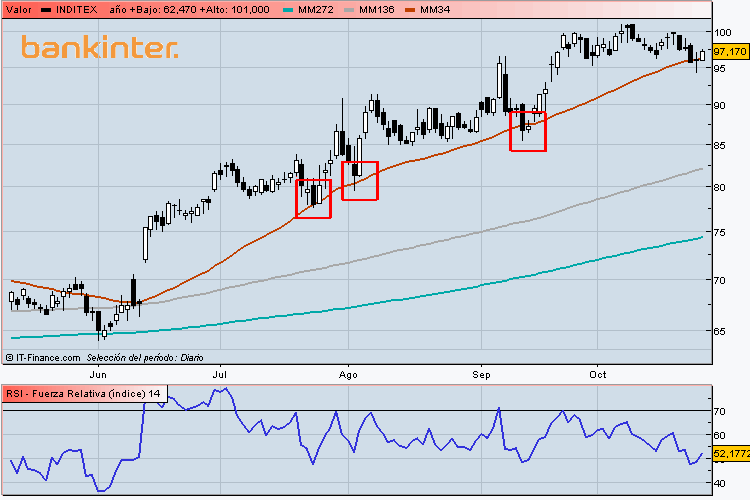BEST TECHNIQUES IN TRADING

5 Effective Strategies for Successful Trading
Trading in financial markets requires a deep understanding of various techniques and strategies. Implementing the right approach can significantly increase your chances of success. In this article, we will explore five effective techniques that can help enhance your trading outcomes.
1. Trend Following
Trend following is a popular trading strategy that involves identifying and trading in the direction of the prevailing market trend. This technique relies on technical analysis indicators, such as moving averages, to determine the market trend. By following the trend, traders can capitalize on potential price movements and maximize their profits.
2. Breakout Trading
Breakout trading involves identifying key levels of support and resistance and entering trades when the price breaks above or below these levels. This strategy aims to capture significant price movements that occur after a period of consolidation. Traders can use various technical indicators, such as Bollinger Bands or Fibonacci retracements, to identify potential breakout opportunities.
3. Risk Management
Effective risk management is crucial for long-term success in trading. Traders should always use proper risk management techniques, such as setting stop-loss orders and limiting the amount of capital risked per trade. By managing risk effectively, traders can protect their capital and avoid significant losses, allowing them to stay in the game for the long run.
4. Fundamental Analysis
While technical analysis is widely used in trading, incorporating fundamental analysis can provide valuable insights. Fundamental analysis involves analyzing economic indicators, company financials, and news events to assess the intrinsic value of an asset. By combining both technical and fundamental analysis, traders can make more informed trading decisions.
5. Diversification
Diversification is an essential technique to mitigate risk in trading. By spreading investments across different asset classes, sectors, or geographical regions, traders can reduce the impact of a single investment's poor performance. Diversification helps to ensure that potential losses from one trade are offset by gains in other trades, reducing overall portfolio volatility.
Strategies for Successful Trading
In the dynamic world of financial markets, navigating the complexities of trading requires a strategic approach. Successful trading is not merely about luck; it involves meticulous planning, continuous learning, and disciplined execution. Here, we explore key strategies that can pave the way for success in your trading endeavors.
1. Develop a Solid Trading Plan: Successful traders begin with a well-defined trading plan. This plan outlines your financial goals, risk tolerance, and strategies for entering and exiting trades. It serves as your roadmap, providing clarity in the often unpredictable terrain of the market.
2. Risk Management is Paramount: One of the hallmarks of a successful trader is effective risk management. Never expose more than a small percentage of your trading capital on a single trade. This shields you from significant losses and allows you to survive and thrive in the long run.
3. Continuous Education and Analysis: Markets evolve, and successful traders adapt. Stay informed by dedicating time to continuous education. Analyze market trends, study charts, and remain updated on economic indicators. Knowledge is your most potent tool in the world of trading.
4. Embrace Diversification: Avoid putting all your eggs in one basket. Diversifying your investment portfolio across various assets can help mitigate risks. A diverse portfolio is less susceptible to the impact of a single market event, providing stability during turbulent times.
5. Patience and Discipline: Impulsive decisions can lead to significant losses. Successful traders exercise patience and discipline. Wait for favorable setups, adhere to your trading plan, and resist the urge to deviate based on emotions.
6. Utilize Stop-Loss Orders: Protect your investments by incorporating stop-loss orders. These predefined exit points limit potential losses by automatically closing a trade when a certain price level is reached. It's an essential tool for risk management.
7. Stay Calm During Drawdowns: Losses are inevitable in trading. How you handle drawdowns determines your resilience as a trader. Maintain a calm mindset, learn from losses, and use setbacks as opportunities to refine your strategy.
8. Adapt to Market Conditions: Markets are dynamic, with conditions that can shift rapidly. Successful traders adapt their strategies to varying market conditions. A strategy that works in a trending market may need adjustments in a sideways or volatile market.
In conclusion, successful trading requires a combination of effective techniques and strategies. By implementing trend following, breakout trading, risk management, fundamental analysis, and diversification, traders can improve their chances of profitability and long-term success. Remember, it is essential to adapt these techniques to your individual trading style and always stay disciplined in executing your trades.
- Pingback: RISK AND CAPITAL MANAGEMENT IN TRADING - strategictraderpro.com
Leave a Reply